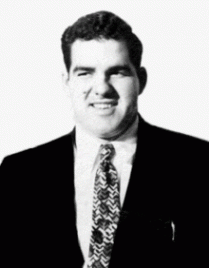Harry Daghlian
Wednesday, January 23, 2019
Haroutune Krikor "Harry" Daghlian Jr. (May 4, 1921 – September 15, 1945) was a physicist with the Manhattan Project which designed and produced the atomic bombs that were used in World War II. He accidentally irradiated himself on August 21, 1945, during a critical mass experiment at the remote Omega Site of the Los Alamos Laboratory in New Mexico, resulting in his death 25 days later.
As a result of the incident, safety regulations for the project were scrutinized and revised. A special committee was established to review any similar experiments and recommend appropriate safety procedures. This change of procedures included needing a minimum of two people involved in such an experiment, using at least two instruments monitoring neutron intensities with audible alerts, and preparing a plan for operating methods and any contingencies that might occur during similar experiments. Additionally, discussions and designs for remote-controlled test devices were initiated, eventually leading to the creation of the Godiva device.
These changes did not prevent another criticality accident from happening at Los Alamos the following year. Louis Slotin, a colleague of Daghlian's, was killed in 1946 while performing criticality tests on the same plutonium core. After these two incidents it became known as the "demon core", and all similar criticality experiments were halted until remote-controlled assembly devices were more fully developed and available.
Daghlian was memorialized on May 20, 2000, by the city of New London, with the erection of a memorial stone and flagpole in Calkins Park, which was unveiled by his brother and sister. It read: "though not in uniform, he died in service to his country."





